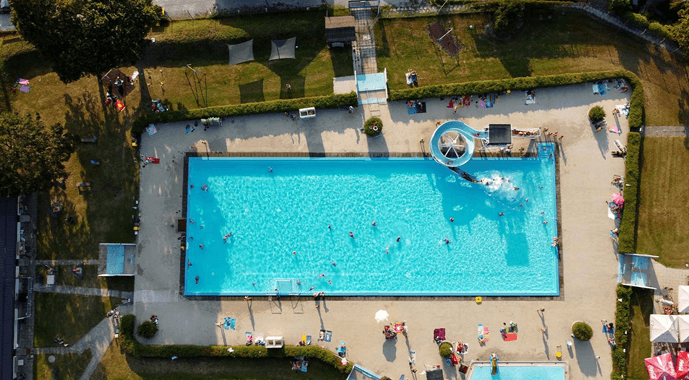Keeping a pool clean is more than just a chore—it’s a balance of chemistry, circulation, and mechanical intervention. Among all maintenance tools, pool cleaners are the unsung heroes that save time, effort, and water clarity. But how exactly do they work? In this article, we take a deep dive into the inner workings of modern pool cleaners and explore what makes the best pool cleaning technologies stand out.
The Three Main Types of Pool Cleaners
To understand how pool cleaners work, it’s helpful to first categorize them. Pool cleaners generally fall into three main types:
1. Suction-Side Pool Cleaners
These cleaners connect to the pool’s existing filtration system, typically via a skimmer or a dedicated suction line. Powered by the suction created from the pool pump, they move randomly across the pool surface, vacuuming dirt and debris into the filter.
How They Work:
The cleaner uses suction to pull debris from the pool floor.
A rubber disc or set of wheels allows movement, while a diaphragm or flapper creates pulsing that propels the unit.
Debris is sent directly into the pool’s filter, so the pump and filter must be cleaned more frequently.
Pros:
Cost-effective
Simple setup
Low upfront maintenance
Cons:
Relies on your pool’s filter system
Less efficient in large pools
Random cleaning paths may miss spots
2. Pressure-Side Pool Cleaners
These cleaners use the return pressure from your pool pump or a separate booster pump to move around the pool. They often have their own filter bags and do not burden the main filtration system.
How They Work:
Water pressure powers the cleaner’s wheels and internal venturi jets.
As the unit moves, it creates suction through a venturi effect, drawing debris into a filter bag.
Some models include tail scrubs to stir up fine particles.
Pros:
Offloads work from the pool’s filtration system
Collects large debris effectively
Good for pools with heavy leaf loads
Cons:
Higher cost than suction-side cleaners
Requires a booster pump in many cases
More parts can mean more maintenance
3. Robotic Pool Cleaners
Robotic pool cleaners are self-contained units powered by electricity. They have their own motors, filters, and programming systems. These devices are at the forefront of pool cleaning technology.
How They Work:
Plugged into a power source (with a transformer for safety), they operate independently of your pool system.
Internal motors drive wheels or treads, and a built-in pump sucks debris into a filter chamber.
Sensors and algorithms guide the cleaner along efficient paths, often covering floors, walls, and waterlines.
Pros:
Most energy-efficient over time
Superior cleaning performance
Smart navigation and scheduling features
Cons:
Highest upfront cost
Must be removed and cleaned after use
Requires occasional filter and motor maintenance
Key Components of Advanced Pool Cleaners
Regardless of the type, the best pool cleaners tend to share certain advanced components that boost performance, efficiency, and reliability.
1. Drive Systems
Wheels vs. Treads: Treaded cleaners tend to have better traction, especially on inclined surfaces like pool walls.
Motorized vs. Hydraulic: Robotic units rely on motorized drives, while suction and pressure cleaners use hydraulic propulsion.
2. Filtration
Integrated Filter Canisters: Especially in robotic models, these remove debris without taxing the pool’s filter system.
Fine Particle Capture: High-end models can capture debris as small as 2 microns, reducing cloudiness and algae risk.
3. Navigation Systems
Random vs. Smart Pathing: Basic models move randomly, while advanced robotic cleaners use gyroscopes, mapping software, and sensors for complete coverage.
Obstacle Detection: Premium models can identify and avoid ladders, drains, and steps to prevent getting stuck.
4. Programmable Features
Cleaning Modes: Choose between quick clean, floor-only, or full coverage modes.
Remote/App Control: Some units can be scheduled or controlled via smartphone apps.
Energy Monitoring: Smart models provide data on electricity usage and cycle efficiency.
What Makes a Pool Cleaner “The Best”?
While the term “best” is subjective, the most effective pool cleaners typically excel in a few key areas:
Efficiency: Cleans more in less time using intelligent routing.
Ease of Use: Simple to set up, operate, and clean.
Adaptability: Works well in different pool shapes, sizes, and surfaces.
Durability: Withstands sun, chlorine, and physical wear over multiple seasons.
Maintenance Requirements: Fewer moving parts and easy-access filters make for a better long-term experience.
Final Thoughts
Understanding how pool cleaners work helps you make informed decisions about which type suits your needs best. Whether it’s a suction-side model using your pool’s existing system or a robotic cleaner with state-of-the-art navigation and energy-saving features, the underlying technology is all about minimizing manual work while maximizing pool hygiene.
The best pool cleaner isn’t just about power—it’s about smart design, tailored performance, and long-term value. And by looking under the hood of these devices, we see how engineering meets convenience to redefine what it means to keep a pool truly clean.







